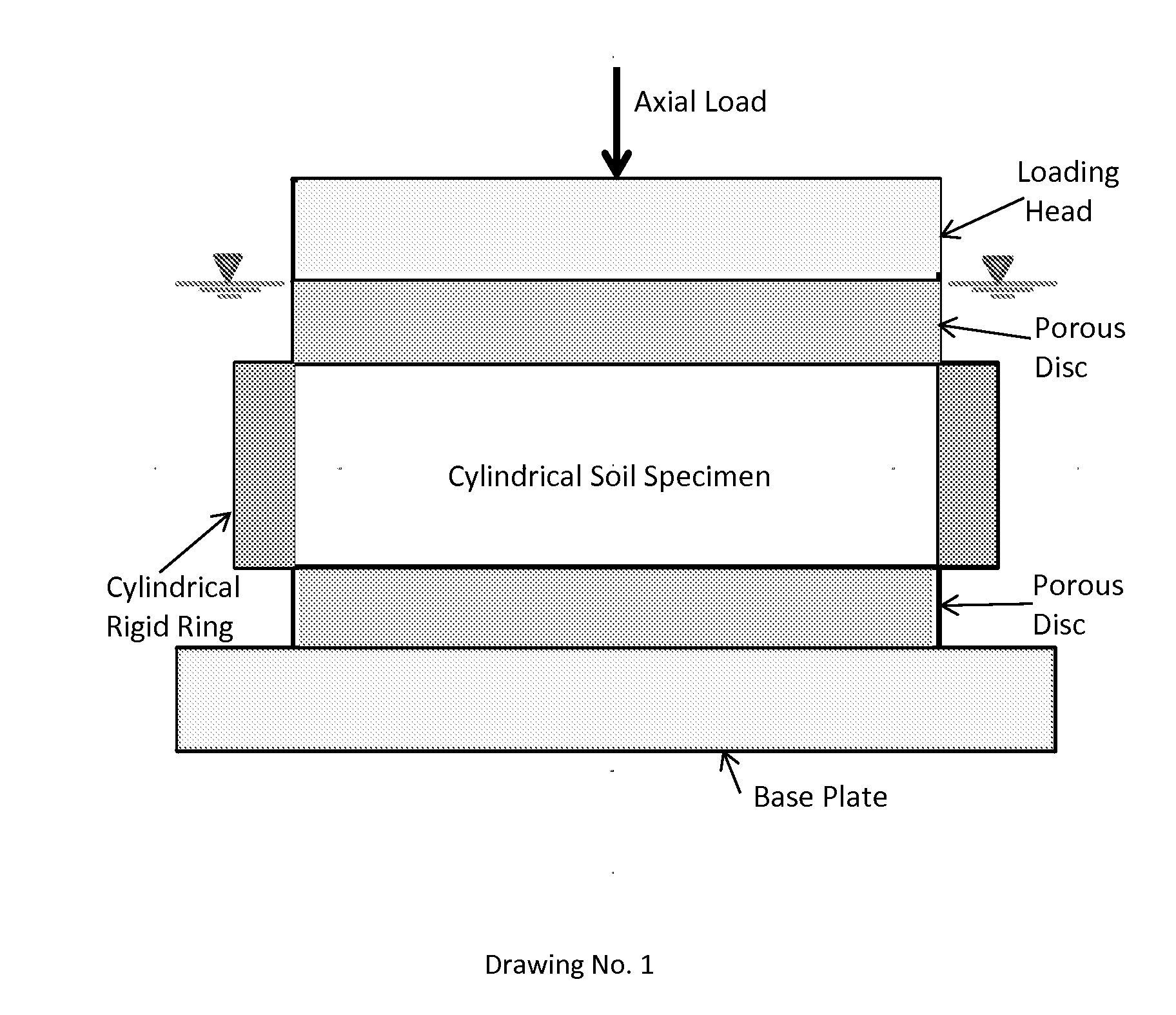Test Device for Determining Three-Dimensional Consolidation Properties of Soils
a technology of three-dimensional consolidation and test device, which is applied in the direction of material strength using tensile/compressive force, instruments, foundation engineering, etc., can solve the problem of not providing accurate values of consolidation properties, and achieve the effect of increasing lateral resistance and dissolving excess pore-water pressur
- Summary
- Abstract
- Description
- Claims
- Application Information
AI Technical Summary
Benefits of technology
Problems solved by technology
Method used
Image
Examples
Embodiment Construction
[0041]Detailed description of the invention has been explained below in Sections (a) though (g).
(a) Standard Test Methods and Their Limitations
[0042]The standard test method for one-dimensional consolidation properties of soils using incremental loading is described in ASTM Designation: D2435 / D2435M-11 and in AASHTO 216. International and national organizations of several countries have their own standards for this test. The test apparatus consists of a rigid ring as shown in Drawing No. 1. The soil specimen is pushed in the ring to perform the test.
[0043]When foundation loads are transmitted to cohesive subsoils, there is a tendency for a volumetric strain which in the case of saturated material is manifested in an increase in pore water pressure. With sufficient elapsed time, water flows out of the soil pores, permitting excess pore-water pressure to dissipate. The analysis of the volumetric strains which result, and the vertical settlements accompanying them, is simplified if we ...
PUM
 Login to View More
Login to View More Abstract
Description
Claims
Application Information
 Login to View More
Login to View More - R&D
- Intellectual Property
- Life Sciences
- Materials
- Tech Scout
- Unparalleled Data Quality
- Higher Quality Content
- 60% Fewer Hallucinations
Browse by: Latest US Patents, China's latest patents, Technical Efficacy Thesaurus, Application Domain, Technology Topic, Popular Technical Reports.
© 2025 PatSnap. All rights reserved.Legal|Privacy policy|Modern Slavery Act Transparency Statement|Sitemap|About US| Contact US: help@patsnap.com



